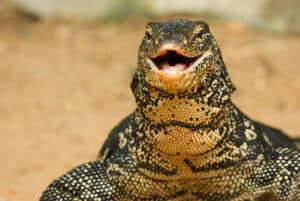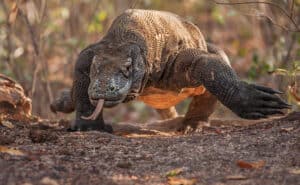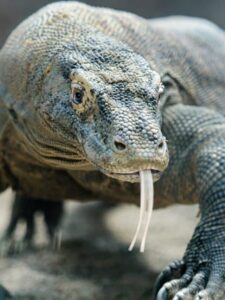Continue reading for our analysis...
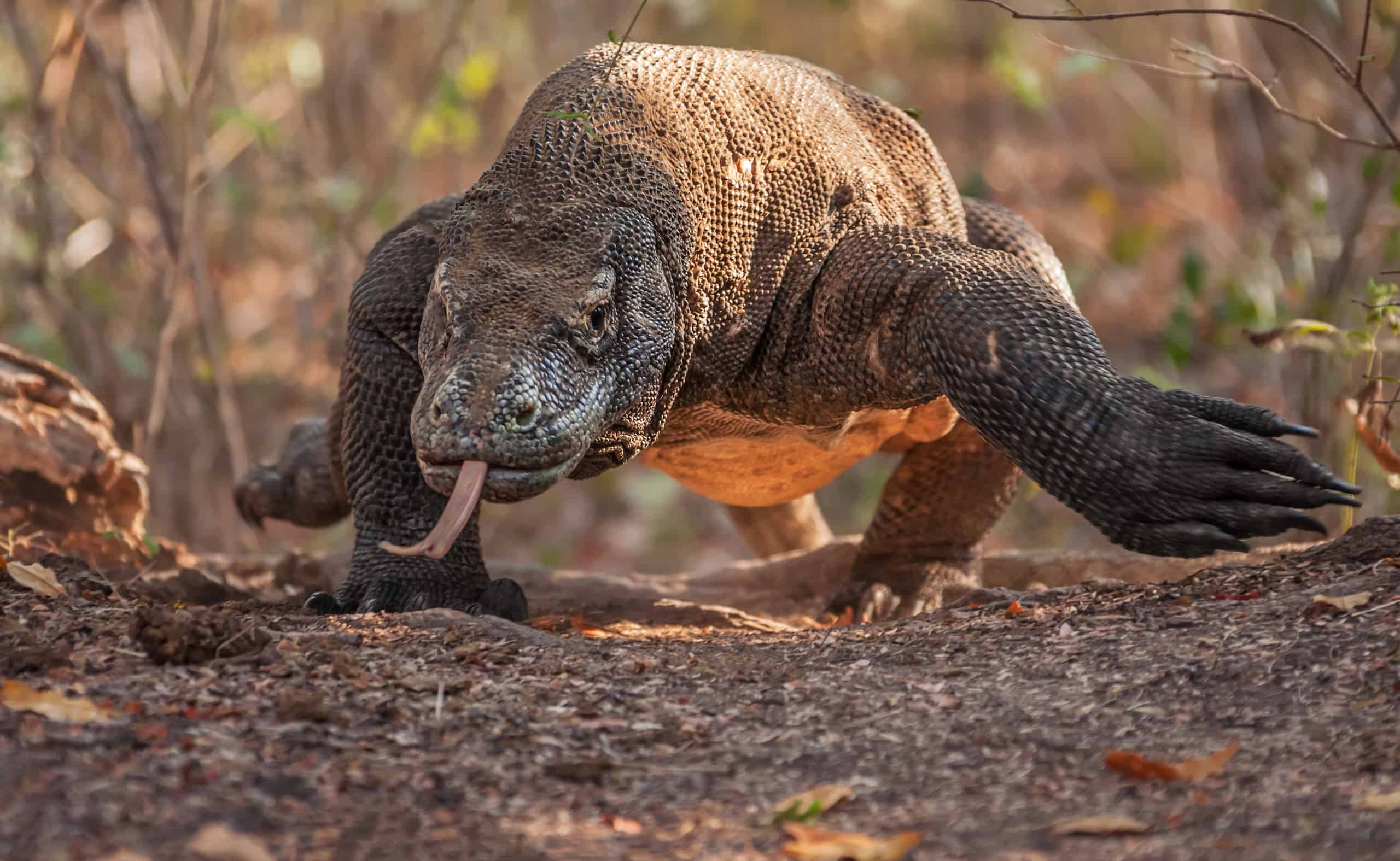
This lizard has a big appetite! Watch below as a huge Komodo dragon swallows an electric eel whole in only a few seconds.
The clip shows a huge Komodo dragon sitting on some rocks near a body of water. After a short moment, the Komodo dragon sees something floating on the water and walks over to it. Realizing that it is an electric eel, the lizard quickly snaps at it, trying to grab it from the water.
After the Komodo dragon grabs onto the eel, it tries to readjust it, taking multiple more bites in the process. Eventually, the dragon can get a better hold of the eel, after which it puts the eel’s tail into its mouth.
In a matter of just a few seconds, the Komodo dragon can swallow down the whole eel, which was almost the same size as itself! The video concludes with the Komodo dragon appearing content with its catch of the day.
Komodo Dragons Have a Nasty Bite
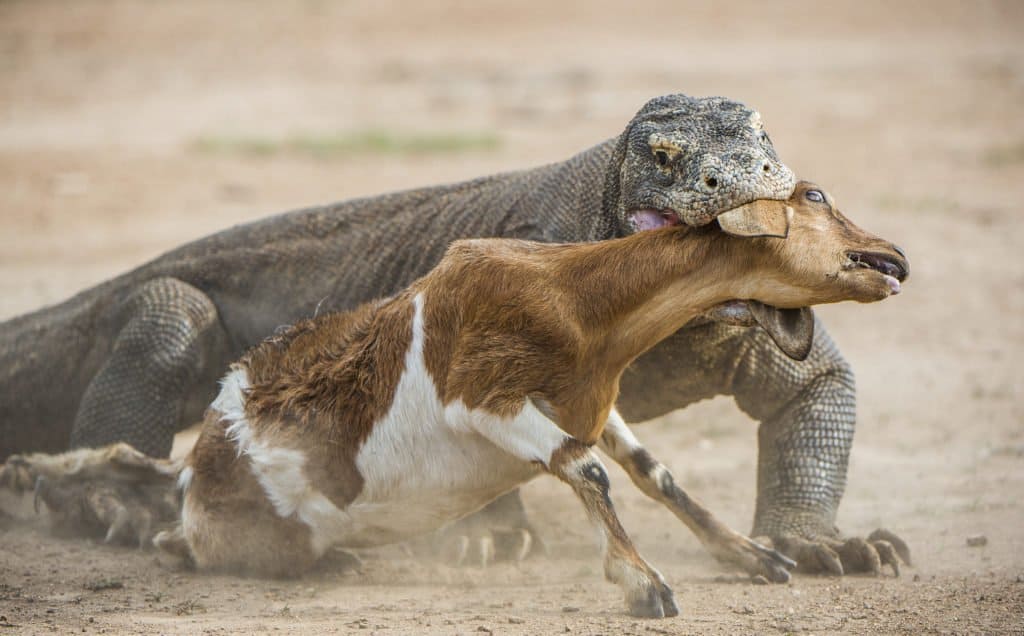
Komodo dragons can eat up to 80% of their body weight.
©Sergey Uryadnikov/Shutterstock.com
In addition to their strength, Komodo dragons also have a pretty nasty bite. First of all, they have 60 sharp teeth which are curved inwards, perfect for tearing away flesh. Their bite force isn’t too strong, but their teeth can do lots of damage with a little force.
After the initial bite, they also have saliva which contains up to 50 different bacterial strains. These bacteria have a variety of effects when they are introduced into a bite wound. For instance, a lot of the bacteria are septic, which causes bites to get infected quickly.
They also have a venom gland that is found within their lower jaw. Their venom works to prevent clotting, which further increases the deadliness of their bite.
Due to these incredibly strong predator traits, they are not afraid of hunting large prey, such as deer and water buffalo!
Where Are Komodo Dragons From?
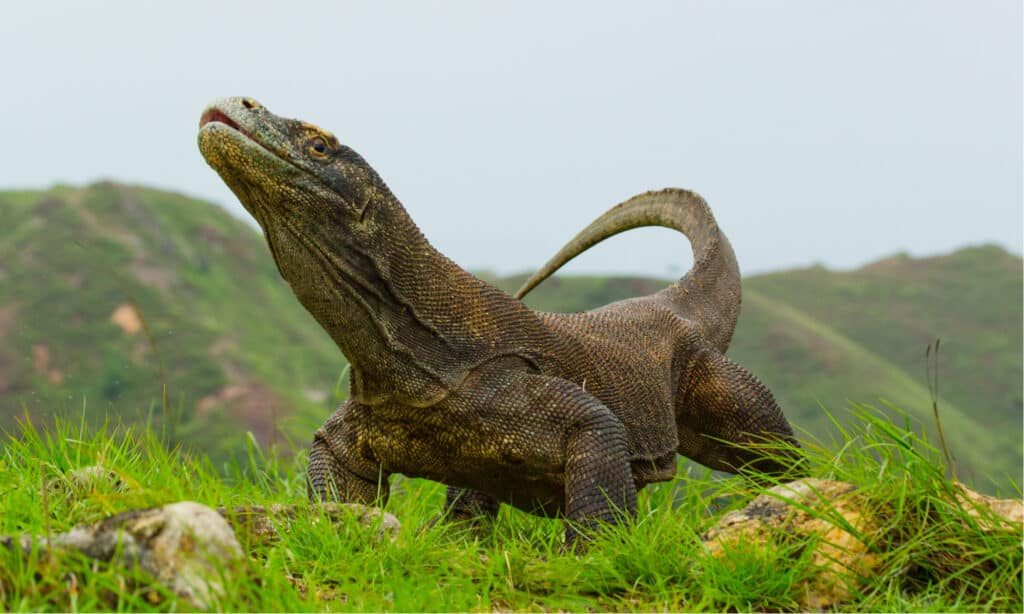
These dragons are native to the Indonesian islands of Komodo, Rintja, Padar, and Flores.
©GUDKOV ANDREY/Shutterstock.com
Komodo dragons are native to Asia specifically and are named after one of the main islands they originate from Komodo. Since they are named after an actual place, Komodo should always be capitalized when you write their name!
In Asia, they are found on a few Indonesian islands. More specifically, they reside on:
- Komodo
- Rintja
- Padar
- Flores
Unfortunately, due to human interaction and interference, they have seen some changes in their population location and abundance in recent years. Most notably, their population has been slowly decreasing over time, which has officially classified them as an endangered species.
Additionally, the dragons have also changed which islands they reside on, which is also an impact of human actions. Human poaching of the Timor deer, which is a primary food source of endemic Komodo dragons has impacted the species greatly. For instance, the poaching has caused populations on islands such as Flores to have dropped to almost extinct levels.
Luckily, recent actions taken by conservation groups have been successful in establishing specific sanctuaries. In sanctuary areas, komodo dragon populations have steadily grown, which hopefully indicates a positive future for the species!
Is it Normal for a Komodo Dragon to Swallow Animals Whole?
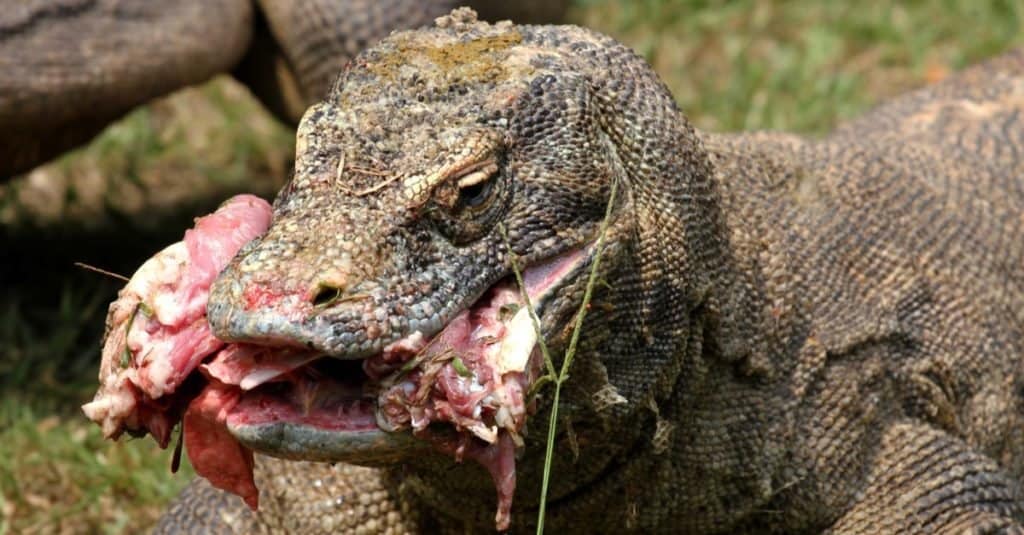
Komodo dragons can be very fast when they are hunting prey.
©Yudi S/Shutterstock.com
Komodo dragons will typically consume their prey by tearing off large chunks of flesh while they hold the carcass down with their legs. They digest their meals using the acids and bacteria in their stomach and for smaller prey they will use their loosely segmented jaws, which together with their flexible skulls and expandable stomachs, will allow them to swallow this prey whole.
They are able to swallow certain prey in one gulp and for a snack the size of an electric eel, which you can see in the video, it doesn’t take very long. For certain prey, they are even known to use objects, like trees, to assist in getting the prey into their throats, which at times causes the tree to fall. Eating prey whole is normal Komodo dragon behavior.
Thank you for reading! Have some feedback for us? Contact the AZ Animals editorial team.



